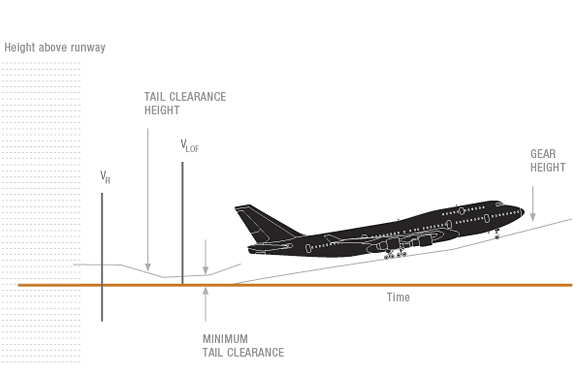
TYPICAL TAIL CLEARANCE FOR TAKEOFF
Figure 1
| Model | Flap | Liftoff Attitude (deg) |
Minimum Tail Clearance [inches (cm)] |
Tail Strike Pitch Attitude (deg) |
| 10 | 10.1 | 39 (99) | 12.5 | |
| 20 | 10.0 | 40 (102) | 12.5 | |
This diagram indicates the effect of flap position on liftoff pitch attitude as well as minimum tail clearance during takeoff. The minimum tail clearance depicted is predicated on a no-wind, no-crosswind control, and constant rate of 2 to 3 degrees per second rate of rotation.
TYPICAL TAIL CLEARANCE FOR ENGINES-OUT TAKEOFF
Figure 2
| Model | Flap | Liftoff Attitude (deg) |
Minimum Tail Clearance [inches (cm)] |
Tail Strike Pitch Attitude (deg) |
| 10, 20 | 10.6 | 34 (86) | 12.5 | |
When operating with an engine failed at V1 with only 75 percent of thrust available for a four-engine airplane or 50 percent of thrust available for a two-engine airplane, minimum tail clearance is reduced. If there is a crosswind, the aileron/spoiler displacement will further reduce minimum tail clearance. In all cases, whether operating in one-engine or two-engine configuration during the rotation, a high average rate of rotation above what is recommended will further reduce minimum tail clearance.

